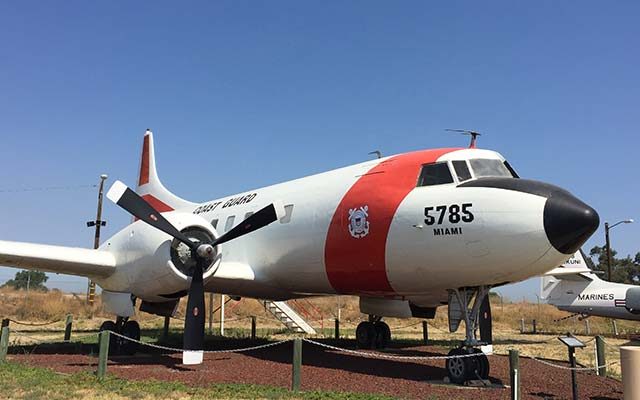
Stumbling upon a photo set from the Castle Air Force Museum my attention was captured by a static display of an old Convair 240. In reading the descriptive caption I realized that I was looking at some aviation history that I had been close to. Further searching revealed documented early days of this Convair 240-11, c/n 133:
1949 – delivered new to Swissair and registered as HB-IRT
1956 – purchased by Mohawk Airlines and leased in the short term to Transocean Air Lines as N1018C
1957 – operated by Mohawk as the Air Chief PEQUOT in scheduled service for the next 10 years
1966 – purchased by Fairchild Hiller
1968 – purchase by Southwestern Skyways re-sold to Permian Skyways and re-registered N280P
1969 – bank repossession stored and mothballed
1975 – seized by the Sheriff of Salt Lake County
From this Museum find, the end of the story is now complete. But as with most accountings there is usually a gap from when a machine becomes unprofitable, aged and rejected until it is scrapped or rescued. In the instance of this old plane however, I can complete the story.
1977 – ‘The Spirit of Modesto’ an adventure, by my account: continue reading about c/n 133 and the Great Valley Travel Club… (Camberley Associates Inc ?)
1978 – Occurrence Date 20 JUN BOTH ENGINES STOPPED, PILOTS UNABLE TO START. LEFT TANK EMPTY, 200 GAL IN RIGHT. RIGHT BOOST PUMP INOP. forced landing in a California cornfield (estimated 3.7 miles short of Modesto (KMOD) airport runway 28R where is was moribund for almost 2 decades
1997 – dismantled by volunteers and extracted by a house mover and hauled down Santa Fe Avenue to Atwater, CA
2000 – displayed to current day at the museum with tribute Coast Guard HC-131 Samaritan transport livery.


I worked on that wreck (as Moose’s grunt labor) and drolly recall what was named “The World’s Smallest Airline, with the Largest Number of Presidents”. I believe there were at least six people who introduced themselves as, president of the Great Valley Travel Club during my employment.
Your recall of that “organization” from the 70’s is exquisite, and if I had a critique, it would be that you were too kind in your description of Schneider. Way too kind. Although the threshold of ego he managed to set would not be broken till I met Steve Jobs, and several other Silicon Valley luminaries who possessed the hubris to take credit for the next day’s sunrise; for Modesto, he was tops. In fact it wasn’t until I entered the US Air Force after GVTC, that I discovered just how unimpressive of a title “Retired Major” could be.
While at home on leave, my mother announced “you won’t believe it, but that plane you worked on crash landed in a field!” I was utterly nonplussed since I had experienced early on what sort of cost containment measures (as in don’t spend any money) were taken in order to get the Convair to move under any sort of power. Although the NTSB and FAA do fine a fine job investigating crashes, they rarely map out the entire chain of events which lead to the root cause. With the GVTC you needed a little, tiny, measly pond (aka Modesto), and some big fish (egos), who think purchasing some Code 3 Hangar Queen, run by a Cessna Flight Center, will an airline someday make.
Thanks for the great read and recollections.